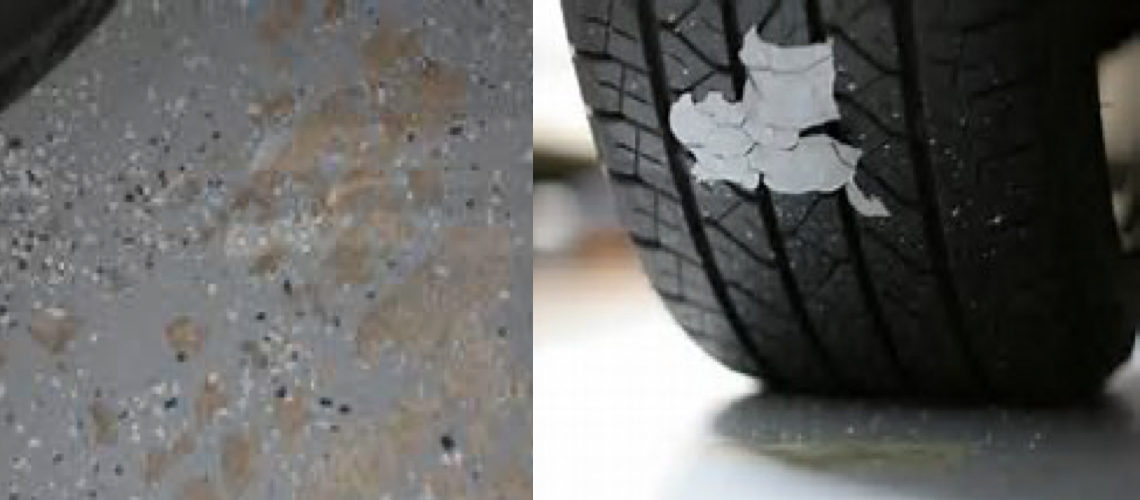Why do my tires leave marks on my new epoxy garage flooring?
Selection of the correct top coat is as vital as the surface preparation for long term durability of epoxy garage flooring.
Why do my tires leave marks on my new epoxy garage flooring? Great question! In the late 1940s, Michelin tire started to develop a replacement material to the natural rubber being used in the manufacturing process of the automotive tire. By 1968 almost 80% of all automotive tires had some concentrate of SBR (styrene-butadiene). This copolymer was designed for better traction of the tire to various road surfaces. Today 100% of all automotive tires have a high level of SBR (styrene butadiene rubber) which is actually a synthetic rubber made up of 25% styrene and 75% butadiene. This solvent-based plasticizer through centrifugal force works its way to the perimeter of your tire. When your tire travels, they pick up heat from the pavement, this heat transfer can cause tire temperatures to reach well over 100 degrees.
When you pull your car into your garage these 4 “hot” tires come in contact with a cooler surface (your concrete or coated surface). During the initial contact and throughout the cool-down phase this solvent softens most topcoats. This causes in many cases, the previously coated surface to “grab” on or attach itself to the tire tread pattern. When you back out of your garage your inferior coating comes with your tires, or leaves “paw prints”.
In conclusion, it will probably become more of an issue as car manufacturers such as Tesla and Mercedes Benz are utilizing more and different types of solvent, and less hard composition rubber in their tires.
Thermal-Chem’s portfolio of high-performance topcoats are meeting these challenges head-on. Our contractors have several choices from our high-end epoxy, polyaspartic, polyurea, and urethane topcoats. Please contact our Technical Support team, 1-800-635-3773.

